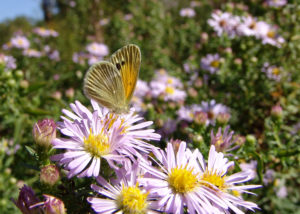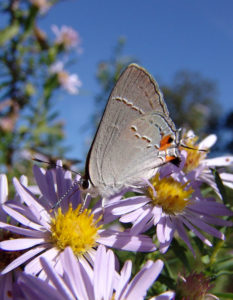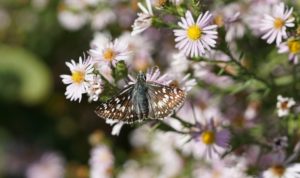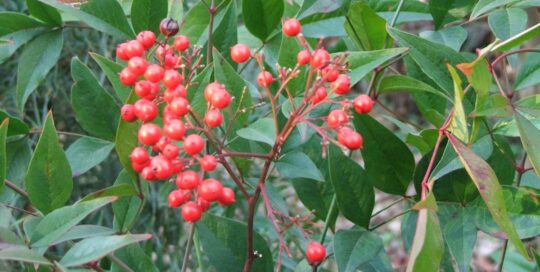Fall Asters are Great for Attracting Pollinators
Views: 708

A good practice for butterfly and pollinator gardens is to ensure something is blooming from spring to fall. While many annuals keep producing until first frost, it can be tricky to find late-blooming perennials. Thankfully, fall asters are great for attracting pollinators.

Asters feature in some of my best butterfly pictures.
About asters
Asters are in the family, Asteraceae, and tribe, Astereae. Their flowers look like tiny daisies. While many are native to North America, only one native is in the genus, Aster: Aster alpinus subsp. vierhapperi. The rest belong to other genera: Almutaster, Canadanthus, Doellingeria, Eucephalus, Eurybia, Ionactis, Oligoneuron, Oreostemma, Sericocarpus and Symphyotrichum. There are many cultivars available.
I have found asters to be easy to grow, with two exceptions: New York and New England asters have not been happy in my Oklahoma yard. This is not surprising, all things considered, given the differences in climate between regions. They will certainly do well further to the north and east. Others varieties have done so well I have to pull them up in spring to keep them from taking over.
Most asters prefer well-drained, rich soil, though some western varieties may thrive in poor soils. Almost all are fairly drought tolerant once established. Light preferences vary by cultivar and species, but most prefer full sun. Most frequently, they come in shades of white to deep purple. Some are low mounding, others can be quite tall. I have to cut several of mine back in spring to keep them from growing too tall and spindly.

Common checkered-skipper on an aster growing in very poor soil.
Asters in my yard
Asters that have performed very well for me include:
- Drummond’s aster (Symphyotrychum drummondii) – Native Drummond’s asters were present on our property when we bought our house. This aster does well in a variety of soils (it has spread in clay, for me) and light exposures, including shade. It has small, almost white flowers that attract small butterflies and bees, and it spreads readily. It is extremely drought tolerant.
- Tatarian aster (Aster tataricus) – I first encountered this non-native during a garden tour. Three plants were covered in migrating monarch butterflies. In a yard full of flowers, butterflies clearly preferred this aster to anything else available. At the first opportunity, I planted one for myself, and that has held true: when my Tatarian asters are blooming, they are covered in butterflies. My Tatarian asters like being watered periodically during drought, but they seem to be unfussy otherwise. They form colonies, spreading by rhizomes.

Tatarian asters are butterfly magnets.
- Raydon’s Favorite aster (Symphiotrichum oblongifolium) – This mounding, full-sun, aromatic aster prefers soils that are average to dry. I see many bees, small butterflies, and other pollinators on it. It is quite stunning when in bloom.
- Bluebird Smooth aster (Symphyotrychum laeve ‘Bluebird’) – I planted this aster last fall, and it survived my summer drought without watering. It’s getting ready to bloom, and I can’t wait to see how well it does with pollinators. I have it in well-drained soil, in a spot that gets full morning sun.
- Heath aster (Symphyotrichum ericoides) – I love this aster so much, I brought the cultivar, ‘Blue Star,’ with me when I moved. Blue Star is extremely hardy, spreads by rhizome, and I have to pull it out every spring lest it overwhelm other plants. But, I wouldn’t do without it because it puts on a spectacular show in fall.
So many to choose from…
These are just a small sample of asters that are available to gardeners. Chances are good that you can find an aster that will thrive in your garden. Then sit back and wait until late summer or fall when you can enjoy its beauty and its pollinators.
Meet Leslie Miller
Leslie Ann Miller shares 3.5 acres in rural Oklahoma with birds, butterflies and wide variety of animals. She is currently transforming her yard with plantings…
Leslie's Recent Posts

Nandina Berries Are Potentially Harmful to Birds: A Warning






